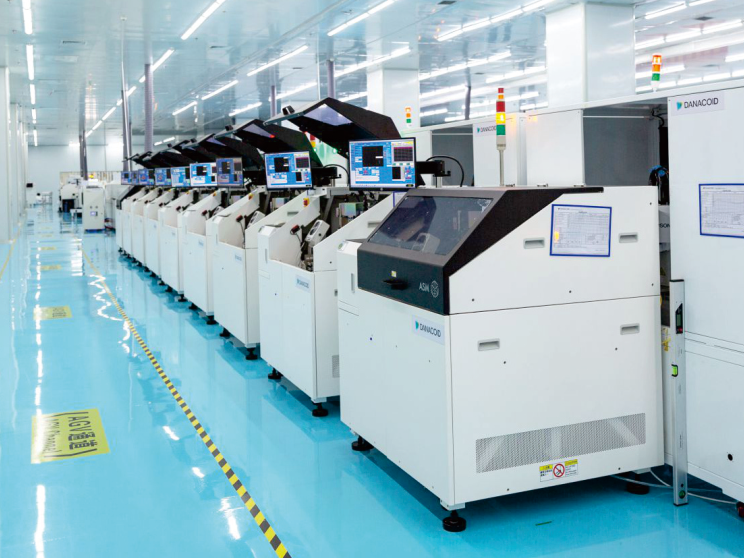Importance of Sound Quality in a loudspeaker system
Sound quality is pivotal to the overall listening experience, influencing clarity, depth, and faithful reproduction of audio as envisioned by artists. In environments where precision is crucial, such as recording studios, high fidelity sound is indispensable. A loudspeaker system ensures accurate audio reproduction by maintaining a neutral sound profile, allowing listeners to experience the intended nuances and dynamics of the performance. Not only does this facilitate an immersive and enjoyable auditory experience, but it also supports critical listening where every sound detail matters.
Conversely, poor sound quality can significantly affect listener satisfaction, leading to fatigue and diminished enjoyment. When frequencies are improperly balanced or audio is distorted, it can cause irritation and listener disengagement. This effect detracts from the primary purpose of a loudspeaker system, which is to provide a seamless auditory experience. Such issues highlight the importance of choosing high-quality loudspeakers that can deliver balanced sound across all frequencies, minimizing listener fatigue and optimizing enjoyment.
Positioning Speakers for Optimal Sound Distribution
When it comes to optimizing your listening experience, ideal speaker placement is key. Experts recommend that speakers should be positioned at ear level, ideally forming an equilateral triangle with the listener. This setup enhances both the sound stage and imaging, allowing for optimal sound dispersion across the room. Another effective strategy is to apply the 'rule of thirds' for placing your speakers. This involves positioning them one-third of the way into your room from the front wall. Doing so helps in better acoustics, reducing phase issues, and enhancing the clarity of the audio output.
Common placement issues can negatively impact the quality of the sound produced. Among the common placement mistakes include putting speakers too close to walls, which can result in excessive bass reinforcement, or setting them too far apart, leading to a fragmented sound image. Moreover, placing speakers in corners can amplify unwanted resonances, distorting the intended output. It is also crucial to keep speakers unobstructed by furnishings or other items, as obstructions can muddle certain frequencies and hamper sound projection, reducing overall clarity and fidelity. Adhering to these guidelines ensures an accurate and engaging listening experience through your loudspeaker system.
Addressing Room Reflections and Using Acoustic Treatments
Understanding Room Acoustics
Room acoustics play a crucial role in the overall quality of sound in an audio system. Elements such as reflective surfaces can introduce echoes and muddiness, significantly impacting the audio clarity and detail. To fully understand how sound behaves within a space, it is vital to analyze the shape, size, and materials of the room. Concepts like reverberation time and frequency response are essential for assessing these effects. By understanding these acoustic properties, you can make the necessary adjustments for optimal sound distribution and performance.
Effective Acoustic Treatments
To manage room reflections and enhance sound clarity, implementing techniques like acoustic panels, bass traps, and diffusers is highly effective. These treatments can reduce echoes and standing waves that often lead to an impaired audio experience. Strategic placement is key, particularly for addressing both high and low frequencies. Improperly balanced acoustic treatments can result in an imbalanced sound environment, detracting from the overall audio quality. Thus, ensuring a properly treated room can significantly improve the listening experience, allowing the intricate details of your loudspeaker system to shine through effectively.
Improving Drivers, Amplifiers, and Cables
Upgrading Speaker Drivers
Enhancing the quality of speaker drivers can substantially elevate sound reproduction. High-quality drivers are engineered with advanced materials and superior design, which result in improved frequency response and dynamic range. This enhances your loudspeaker's ability to articulate the finer details of sound across diverse musical genres. When choosing drivers, prioritize those with excellent power handling and sensitivity ratings. This ensures compatibility with various music styles and listening levels, allowing the loudspeakers to perform optimally without distortion, even at higher volumes.
Choosing the Right Amplifier
Selecting a suitable amplifier is crucial for maintaining effective sound delivery. Mismatches between the amplifier's power output and the speakers' handling specifications can lead to distortion or insufficient sound. To ensure optimal performance, look for amplifiers with low Total Harmonic Distortion (THD) ratings, which indicate cleaner sound replication. Additionally, a high damping factor ensures better control over speaker movement, leading to tighter, more precise audio. Match the wattage output of your amplifier to your loudspeaker system to ensure that it meets the demands of your audio environment without straying into distortion.
High-Quality Cables
Investing in high-quality speaker cables can significantly enhance audio performance by minimizing signal loss and preserving connection integrity. The gauge of the cable is critical; for longer distances, a thicker gauge is preferable to prevent resistance that could degrade the sound signal. Opt for cables made from low-oxygen copper and those that are well-shielded to protect against interference, which ensures superior conductivity and reduces the risk of noise or signal interference impacting audio quality. The right cables not only ensure robust connections but also preserve the transparency and clarity of your loudspeaker system.
Understanding Equalization
Equalization (EQ) is a critical aspect of sound adjustment, allowing users to tailor sound output according to personal preferences and room acoustics. By understanding frequency bands, listeners can effectively enhance or reduce specific frequencies to achieve a desired audio profile. Proper use of EQ not only helps in tailoring sound to individual tastes but also corrects any imbalances present in the audio, thus enhancing the overall listening experience. Adjusting the EQ settings enables users to compensate for the room's acoustic characteristics or any inherent inadequacies in the loudspeaker system.
Fine-tuning EQ for Different Genres
Fine-tuning EQ settings based on music genres can drastically improve the overall listening experience. Each genre has unique characteristics that may require specific EQ adjustments. For instance, rock music often benefits from boosted mid-range frequencies to highlight guitars and vocals, while classical music might achieve better results with a flat response to preserve the depth and clarity of orchestral instruments. Experimenting with various EQ presets can maximize sound quality across different music genres and ensure a consistent and enjoyable listening experience. This approach allows users to optimize their loudspeaker system for a wide variety of musical styles, leveraging the flexibility of their audio equipment.
Keeping the System Clean and Checking Connections
Regular Maintenance Tips
Regular maintenance of your loudspeaker system is crucial to ensure optimal performance and longevity. A primary step is cleaning the system to prevent dust and debris from accumulating, which can muffle sound. Use a soft, dry cloth to gently clean sensitive components, like the cones and surround materials. Regular inspections for wear or damage can further prolong the life of your loudspeakers. By catching issues early, such as wear on the cones or cracks in the surround materials, you can address them before they lead to significant problems.
Checking and Securing Connections
Ensuring solid connections within your loudspeaker system is essential for maintaining superior audio delivery. Loose connections can result in signal loss, degrading audio quality. Regularly inspect all connections and re-secure them as necessary. Using high-quality connectors can also help maintain a secure connection. Ensuring everything is firmly connected reduces the risk of interruptions and ensures that your loudspeaker system delivers sound as intended. This attention to detail plays a vital role in sustaining the integrity of your audio experience.
Simple Steps for Enhanced Sound Quality
Recap of Key Improvements
Properly positioning your speakers, upgrading components, and employing acoustic treatments are crucial steps that can drastically enhance sound quality. Each of these improvements plays a significant role in how audio is perceived, delivering a more immersive experience. Regular maintenance of your loudspeaker system is essential for maintaining the integrity of sound quality over time. By keeping up with these practices, audiophiles can ensure that their audio equipment continues to deliver exceptional performance.
Long-term Sound Quality Maintenance
Maintaining a loudspeaker system involves implementing a maintenance schedule that includes checking components and cleaning regularly. This consistency ensures the system remains in optimal condition, providing long-lasting, high-quality audio. Additionally, educating listeners about the impact of environmental changes, such as room rearrangement and updates to furniture, is crucial. These changes can significantly influence sound dynamics and are vital to achieving a sustained high-quality sound experience over the long term.
FAQ
Q: Why is sound quality crucial in a loudspeaker system?
A: Sound quality ensures clarity, depth, and faithful reproduction of audio, allowing listeners to experience the intended nuances of a performance and minimizing listener fatigue.
Q: How does speaker placement affect sound quality?
A: Ideal placement enhances sound stage and imaging, ensuring optimal sound dispersion and clarity by reducing phase issues and echoes.
Q: What are the benefits of using acoustic treatments?
A: Acoustic treatments reduce echoes and standing waves, improving sound clarity and ensuring a balanced audio environment.
Q: Why is regular maintenance essential for loudspeakers?
A: Regular maintenance prevents dust accumulation, ensures firm connections, and prolongs the lifespan of the loudspeaker components.
Table of Contents
- Importance of Sound Quality in a loudspeaker system
- Positioning Speakers for Optimal Sound Distribution
- Addressing Room Reflections and Using Acoustic Treatments
- Improving Drivers, Amplifiers, and Cables
- Understanding Equalization
- Fine-tuning EQ for Different Genres
- Keeping the System Clean and Checking Connections
- Simple Steps for Enhanced Sound Quality
- FAQ









